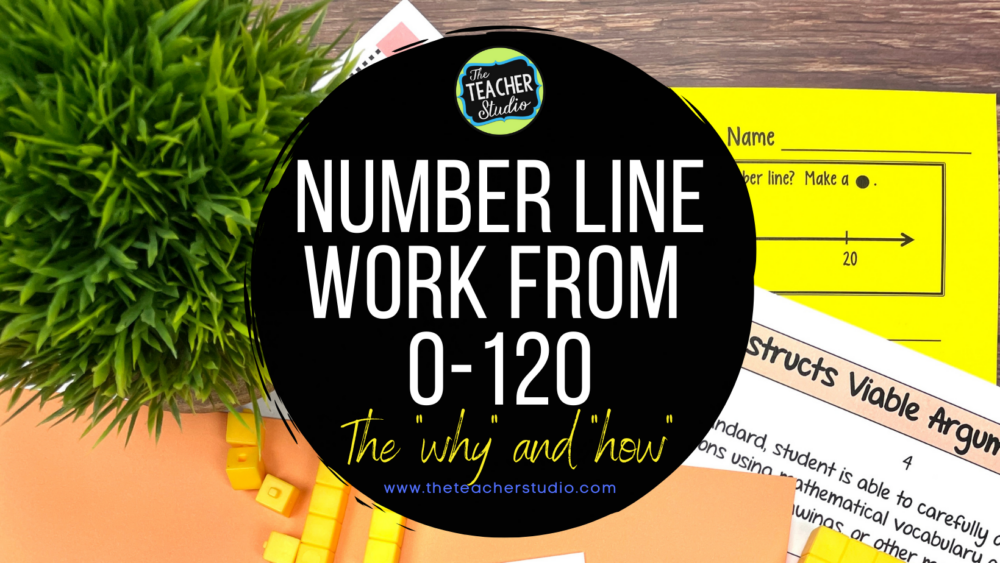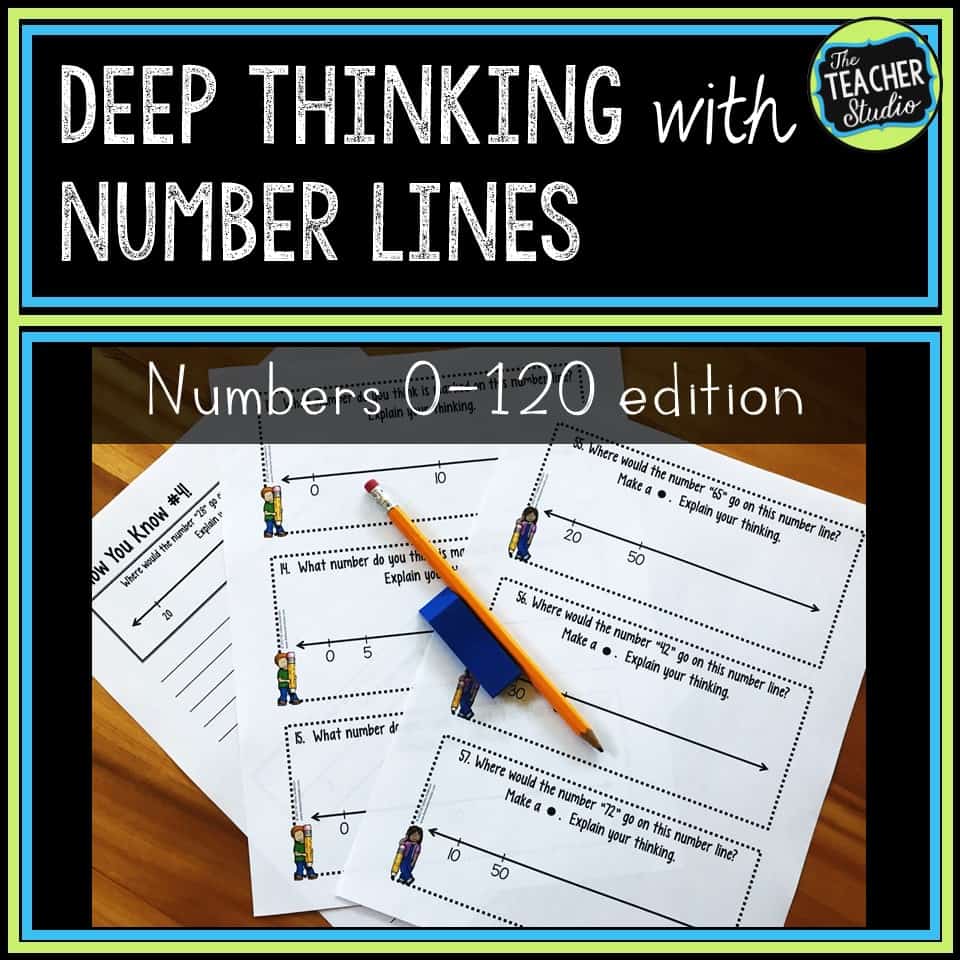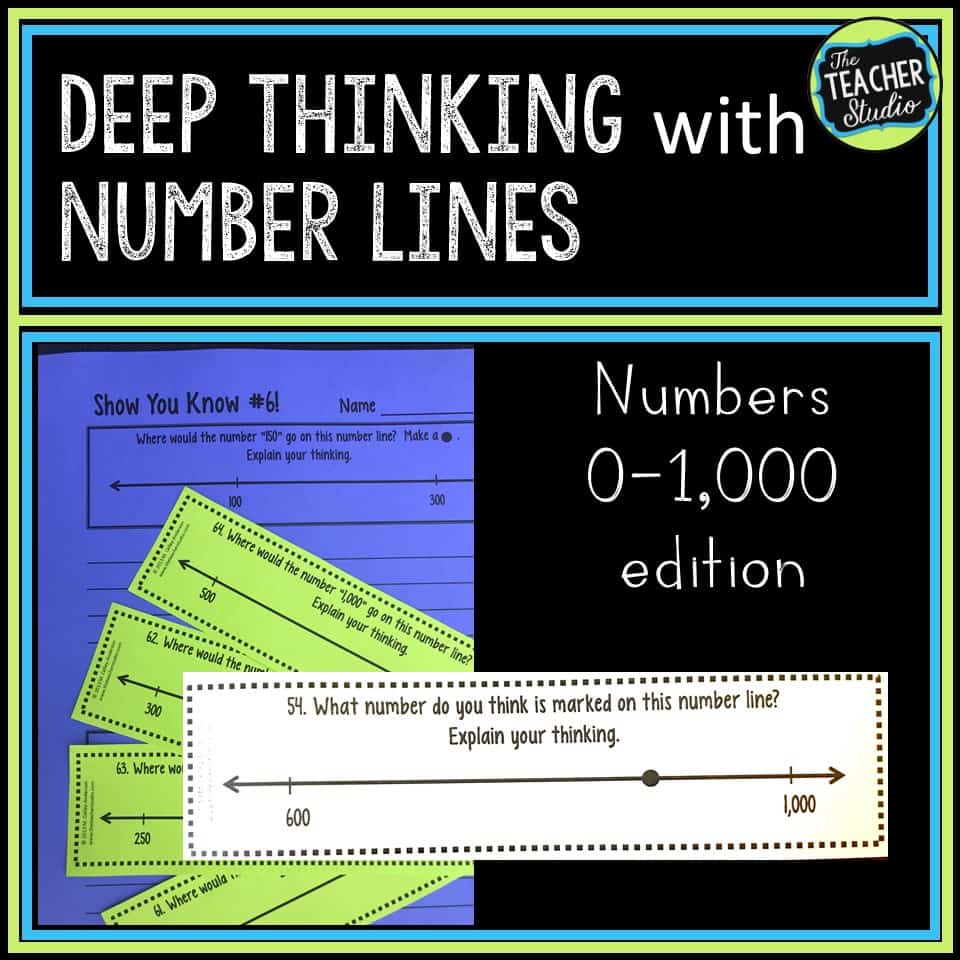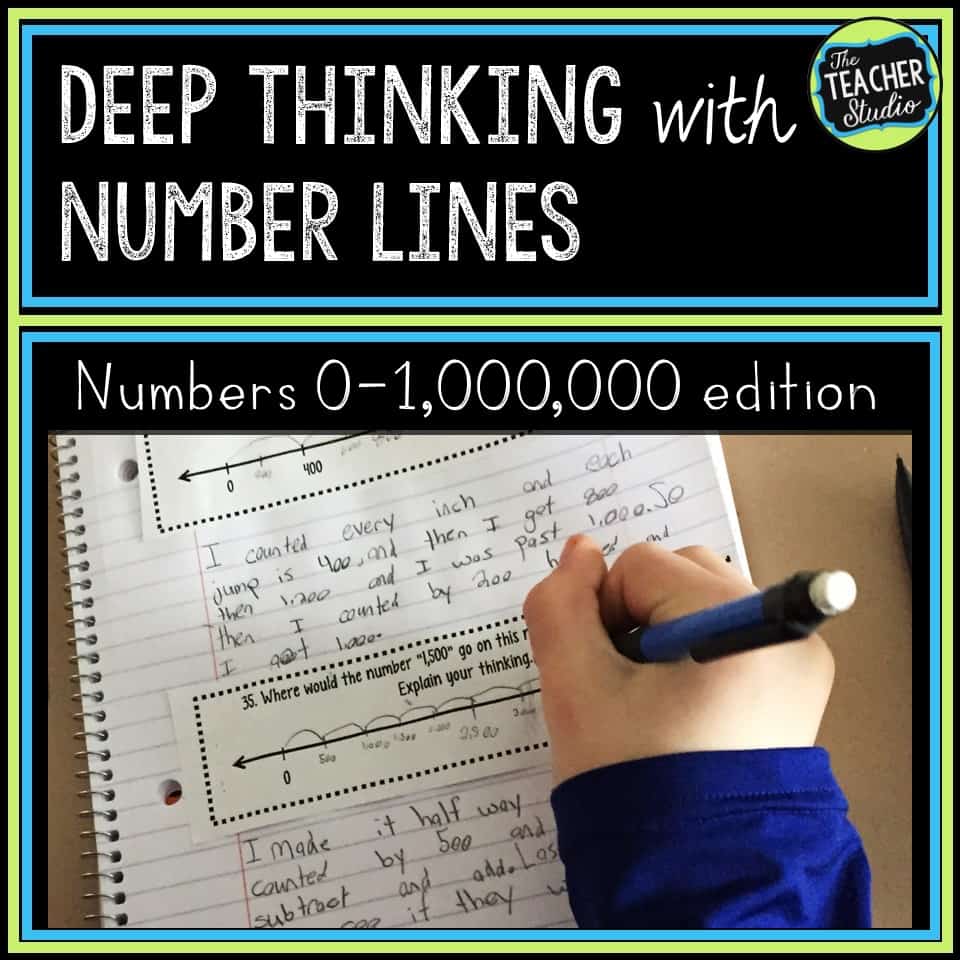One component of math instruction that is often overlooked is having teachers nurture creative thinking in students. By encouraging students to create their own meaning and solution strategies rather than just “fill in the blank”, depth of understanding is cemented. This is true for many math concepts, but is often overlooked when teaching using number line activities.
Check out this post for a ton of ideas for using number lines to build number sense–from the early grades and low numbers all the way through elementary school!
Why Do We Use Number Lines?
As you may know, I am a HUGE fan of using number lines as a part of my place value instruction. Number lines are great way to bridge the gap between concrete (like base 10 blocks) and abstract (numbers only) place value understanding. The cognitive demands of solving tasks on open number lines are significantly higher than other more simplistic activities and have great potential for place value development. So, with that in mind…
So many number line activities and resources take away the thinking from our students. How?
- We only start our number lines at 0.
- We add all the “tick marks” so students can always count instead of using their reasoning.
- Students are not asked to create their own number lines.
- We rarely ask students to find numbers on number lines that are “outside” the identified numbers. (For example, if a number line has the 0 and 10 marked, we don’t ask students to locate “12”)
Getting Started with Number Lines
This post is all about giving you some teaching tips and ideas for using number lines to build place value understanding! I have started with some very basic number line activities and have then made some suggestions for getting more advanced.
I always start my year with number lines to 120. Even though I teach fourth grade, it’s always clear that my students need to start slow and do some of these activities with lower numbers. After they show understanding, I move to numbers up to 1,000, then numbers to 1,000,000, and finally to number lines with fractions and decimals.
Basic Number Line Activities
- Find the dot marked on a number where the tick marks are already marked. This is essentially a counting exercise where students learn that each “tick” represents a number.
- Next, students can find a number when tick marks are missing. For example, the number line goes from 0 to 50 but the “tens” are marked as benchmarks.
- Another step involves having students place a dot at the desired location when given different starting or ending marks. Remember, when you use arrows on number lines, there truly are no “start” or “end” points as the lines are infinite in both directions.
- Work on finding numbers that are one more or one less (or two more or two less, etc.). This helps develop number sense and a better understanding of how our number system works.
- Ensure students understand that the numbers increase in size as they move to the right and decrease as they move to the left.
“Next Step” Number Line Activities
- Helps build spatial awareness with respect to how numbers relate to each other. For example, if a number line has the 0 and 40 marked, students need to see that “jump” of 40 and use that information. That would be very different than a number line that started at 0 and went to 10.
- As students build their number sense, change the range of the number line and repeat above skills–not always starting at 0.
- Vary what numbers are included on your number lines so students have to identify “jumps”.
- Finding halfway points between numbers. This is HUGE to help students develop an understanding of rounding and other place value concepts. Many students have the misconception that you can’t have a “half” of a number like 30 or 50 because they mistakenly believe the numbers are odd. This is a great minilesson to do using base 10 blocks or other manipulatives to prove that you CAN divide these numbers in half! (Also 300, 3,000, and so on!)
- Building toward using number lines for addition and subtraction strategies. When students have a good sense of “number”, they can begin to use number lines to perform operations. Using “open” number lines where students can make jumps of different amounts to show increase or decrease in amount is a great way to extend place value and computational understanding.
Just for fun!
- Try using a clothesline or rope to make a jumbo number line. This lets you clip numbers to them, slide them around, and do all sorts of great activities!
- Have students draw a blank number line. Randomly draw 3 cards or choose three numbers for them to place strategically on their line. Have them justify their thinking.
- Do a variety of number sequencing activities where students have to put numbers in order, determine what “benchmark numbers” they are closest to, and so on.
- Give students each a number and have them make a human number line.
- Use pipe cleaners and numbered beads to create number lines that “move”
I hope these number line ideas inspire you to incorporate them into YOUR teaching! If you want help, please check out my number line resources. These are geared toward helping you develop these concepts with your students! Whether you are looking to develop place value to 120 or beyond, these can help you realize why we use number lines to teach place value!
[one-half-first]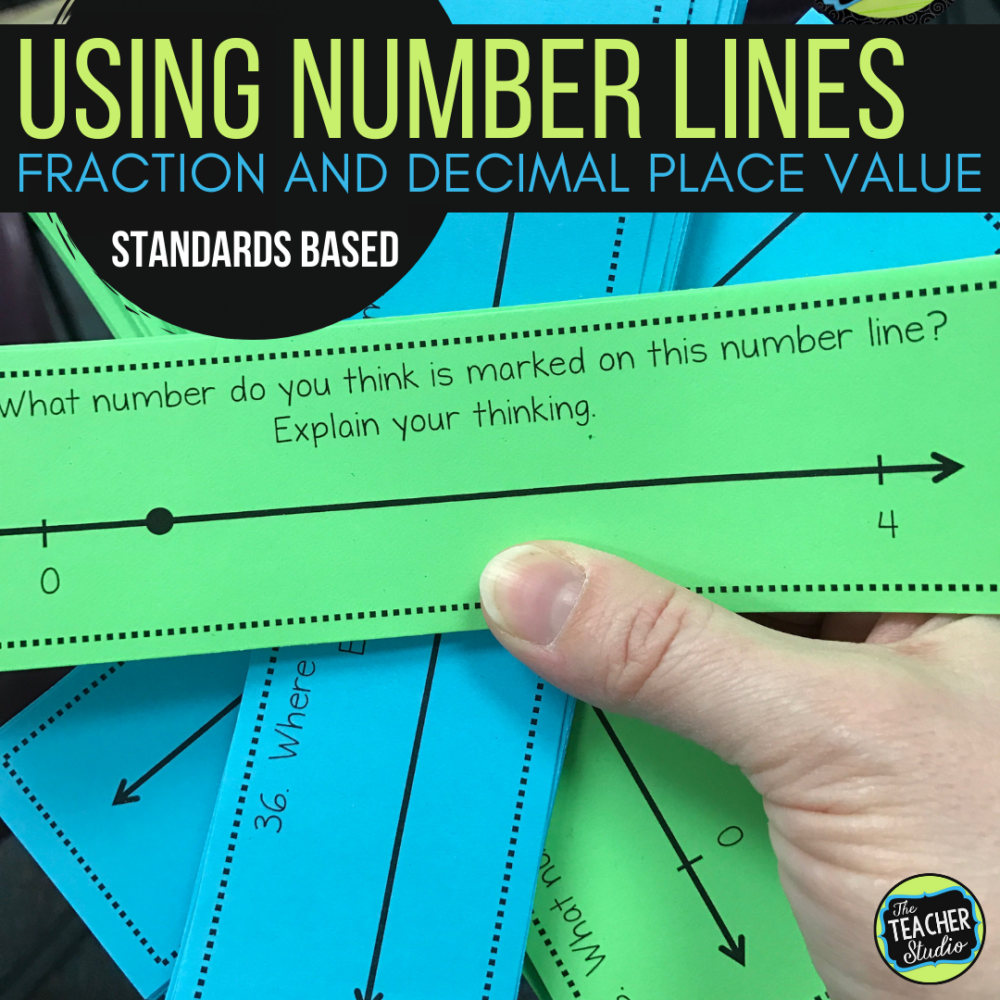 [/one-half-first]
[/one-half-first]
[one-half]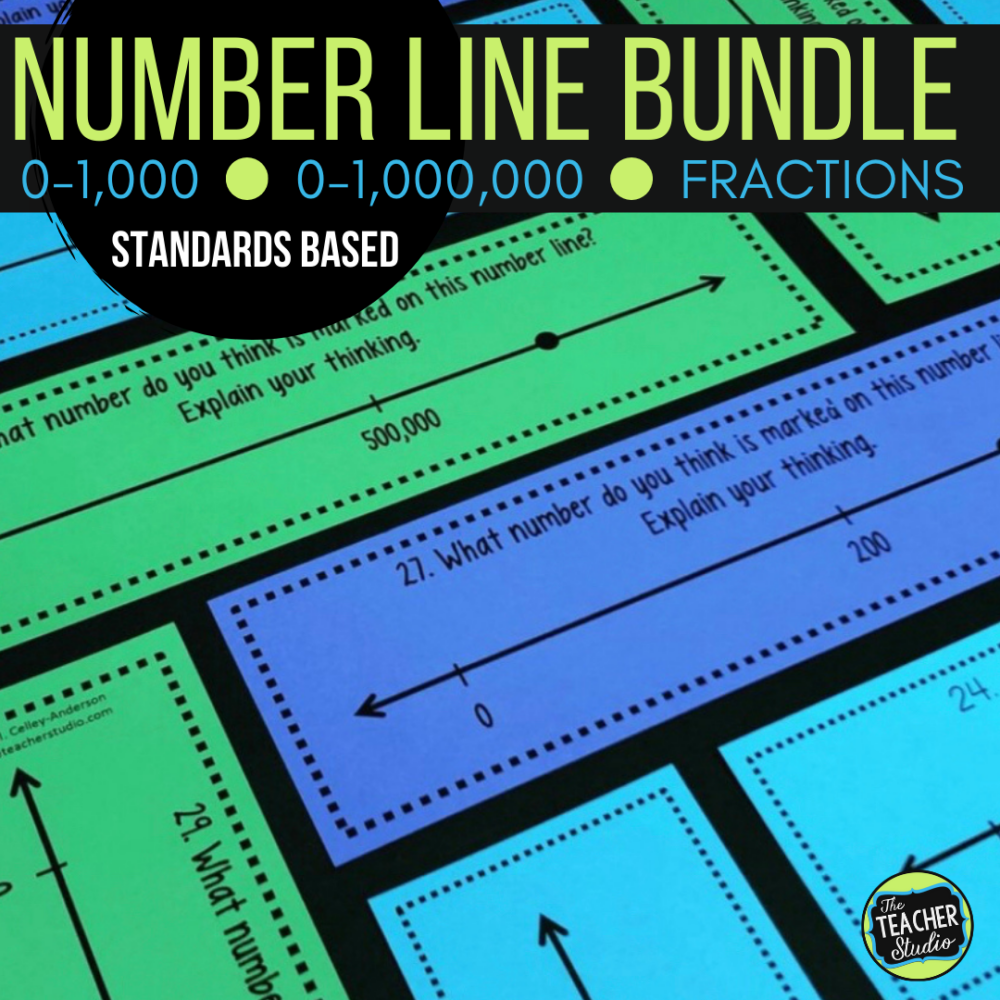 [/one-half]
[/one-half]
Want to check out more number line posts? CLICK HERE to read about increasing math talk with number lines!
Check out THIS POST for some real-world classroom number line action!
Thanks for stopping by!

